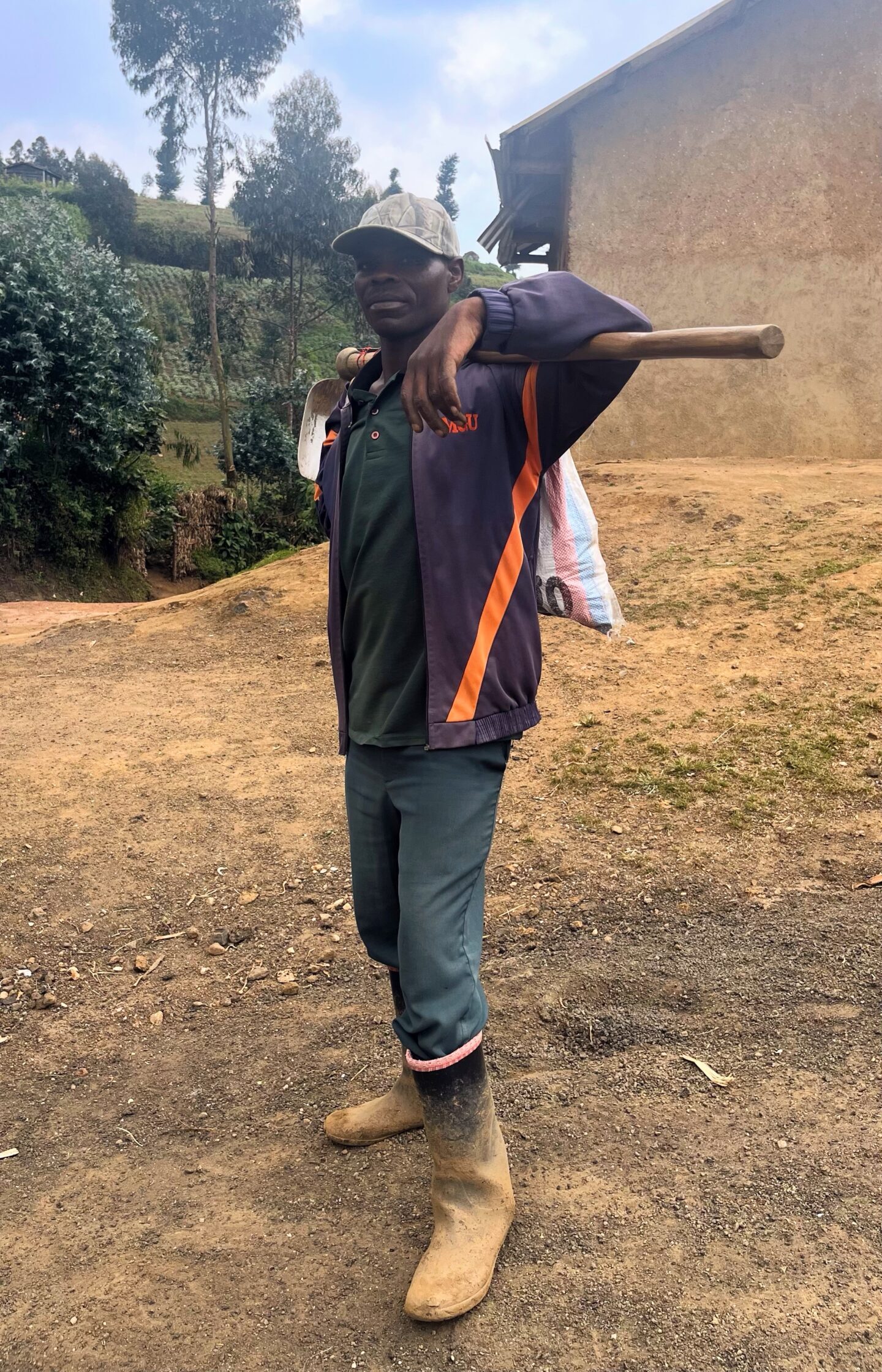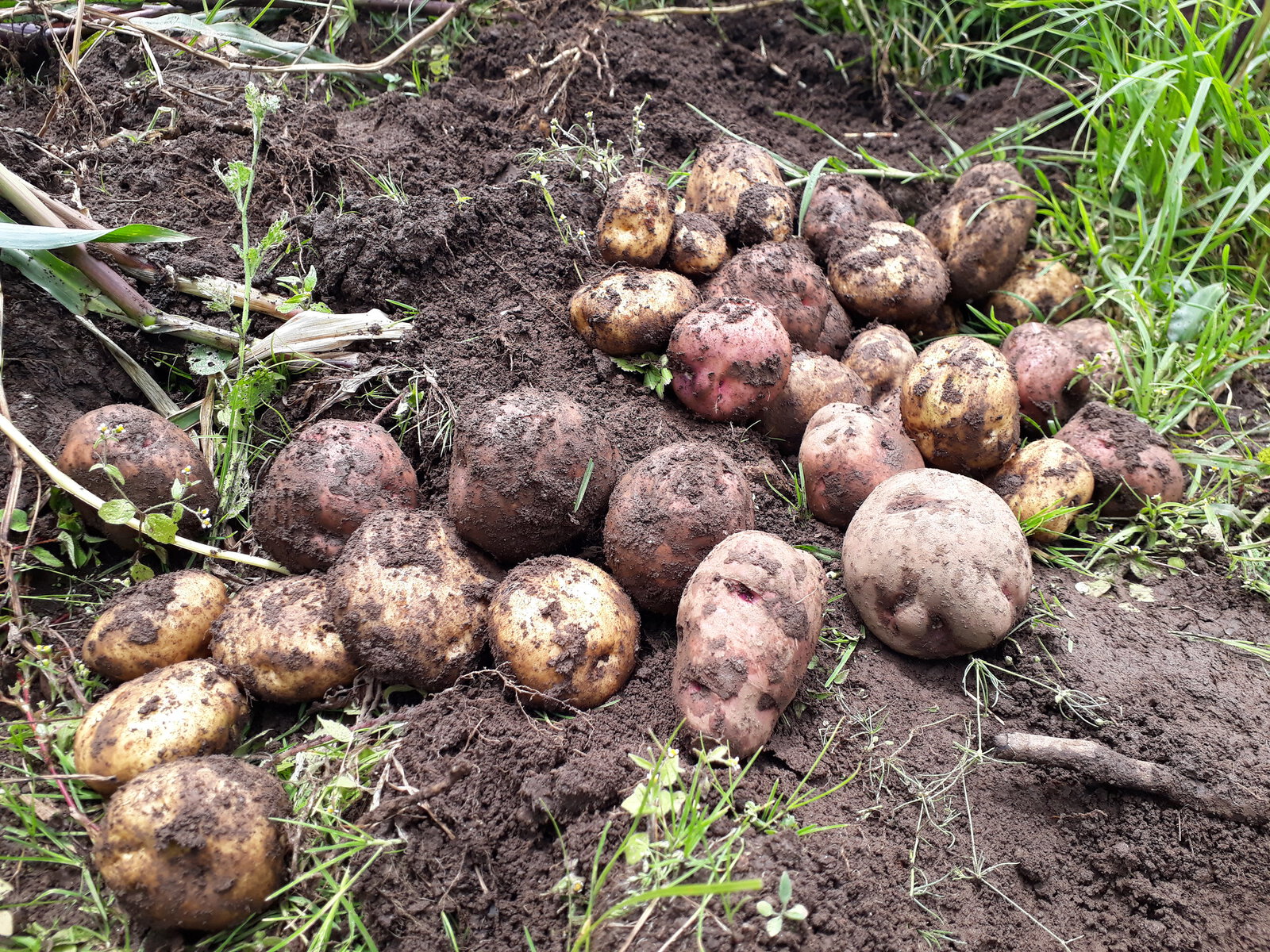This story was originally published by Reasons to be Cheerful
On a sunny afternoon, potato farmers return from the fields in the shadow of Karisimbi, the tallest volcano in Musanze, a district in North Rwanda. Row upon row of terraces stretch across the mountainside, and on the beaten earth path leading to the village of Nyamirongo, vans wait to collect the day’s harvest of beans, maize, sorghum, cassava and of course, the potatoes for which this region is known.
“This was a different place in my father’s time,” Zabayo Hategekimana, a Nyamirongo farmer says. “The slopes were too steep to cultivate and water, and every year the rains would wash away the good soil, leaving behind stony, arid dust.” Hategekimana, who grew up watching his father grow barely enough for their family of seven to subsist on, assumed that this was all their tiny patch of hilly land could give. Then, in the early 2000s, a terracing technique introduced 50 years ago by a Belgian missionary and then adopted by the Rwandan government, transformed his farm — and changed his view.
“With the government’s help, we learned to build radical terraces that sloped back into the hill,” Hategekimana says. “This way, when it rained, rainwater first collected on each terrace and did not flow down with enough intensity to take away the good soil.” Unlike regular bench terraces, which follow the contour of the slope, the terraces in Hategekimana’s village slope backwards toward the hill to optimally conserve both soil and water. This is important: Rwanda, which has the highest population density in Africa (about 525 inhabitants per square kilometer), is a primarily agrarian economy, with 70 percent of its population engaged in farming. Improving agricultural productivity is critical for food and livelihood security, but the country, with its fragile soil, steep slopes and intense rainfall patterns, has long struggled with soil erosion and resultant poor soil quality. Every year, an estimated 745,000 hectares of agricultural land is eroded, and about six million metric tons of crop produce lost to soil erosion.

Radical terraces like the ones in Hategekimana’s village were first introduced by Belgian missionary Cyriel Wieme in the ’70s to combat soil erosion and create more cultivable land. Wieme founded an agricultural school in Rwanda, where he developed reverse slope terraces on hillsides that put the brakes on rainwater flowing downhill, thereby protecting the topsoil and reducing the incidence of floods. The Rwandan government recognized and began encouraging this technique immediately, but it was not until 2023 that Rwanda’s National Strategy for Transformation included a plan to boost agricultural production by adding 142,000 hectares of radical terraces by the end of 2024.
Walk along the sloped fields of Nyamirongo and its environs, and it becomes obvious why Rwanda is called the Land of a Thousand Hills. Its terrain has compelled farmers to develop two types of terraces over the years: radical and progressive. While radical terraces with their reverse slopes suit steep inclines, progressive terraces are for gentler gradients. Girded by ditches and vegetation, progressive terraces are flat and follow the natural contours of the hill. These could take up to five years to establish naturally. In contrast, radical terraces can be, and have been, built in a matter of days. Both types of terraces are stabilized by planting grasses, crops and even trees on the risers (the vertical space between two terraces), which also help reduce the potential water accumulation in the terrace bed.
Where radical terraces have been constructed, the effects have been dramatic. A 2012 study in Northern Rwanda found that the speed of water flowing downhill decreased from one hour (before the terraces were constructed in 2007) to seven hours and 12 minutes after they were made in 2008. The impact on soil quality is palpable on Nyamirongo’s terraces. “We’re able to grow a variety of crops throughout the year,” Imanazabayo Innocent, another local farmer, says, picking up some earth in his hands. “See how good the soil is!”
A recent project to control floods and soil erosion in the catchment area of the Sebeya River in Rwanda’s Western Province has provided further evidence of how successful this strategy can be. The Sebeya River is located upstream of the Congo River Basin, which ultimately flows into the Atlantic Ocean. It provides clean water, hydropower, fishing and irrigation for an area of about 286 square kilometers in Rwanda’s Western Province. However, deforestation, illegal mining and other activities have denuded the region’s steep slopes. Consequently, intense rainfall causes water to flow down at speed, leading to soil erosion, flooding and landslides.





